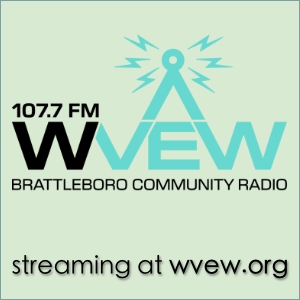DESCRIPTION:
The US Air Force bombed and napalmed cities, towns and villages across the North. Dean Rusk, a supporter of the war and later secretary of state, said the United States bombed “everything that moved in North Korea, every brick standing on top of another.” After running low on urban targets, U.S. bombers destroyed hydroelectric and irrigation dams in the later stages of the war, flooding farmland and destroying crops.
TEXT:
Faked and baked ‘news’ promoting mainstream American media has maximized world attention on the ongoing negotiations between American President Donald Trump and Supreme Leader of North Korea Kim Jong-Un in Singapore. In American media the United States of Americans is identified as heroic and the North Korea of Koreans is identified as something beyond the pejorative, a terrible place and communist no less.
Though it probably matters very little that the First World audience of American entertainment and news conglomerates mostly accepts hook line and sinker, criminal media characterization of the two nations Trump and Kim represent, let us hope a good part of majority humanity in the Third World remembers at least some of the real history of American and North Korean behavior in Korea. It is to the Third World that one must look for the salvation of the specie homo sapiens. Nobel Prize in Economics laureate Joseph Stiglitz says that this shall be “The Chinese Century.” Whenever there are critical negotiations with Americans it can plausibly be a matter of life and death that the nations involved in negotiating be honestly identified.
If not openly stated, it should be kept in mind during the negotiations in Singapore that Americans are indelibly identified as having long begun a holocaust for the three nations of French Indochina, Vietnam, Laos and Cambodia in the name of anti-communism about the same time as its second invasion of Korea for the same openly declared reason, anti-communism.
The North Koreans can be clearly identified as having invaded South Korea on June 25th, 1950, as the forces of South Korea’s unloved leader Syngman Rhee immediately collapsed, several crack units of the South Korean military defecting to the North, while South Korean police and soldiers who remained loyal to Syngman Rhee devoted nearly as much time and energy to hunting down and murdering Rhee’s domestic political opponents—perhaps as many as 100,000 of them, just during the summer of 1950—as they did to defending their country from the North Korean attackers. [see documentation by the South Korea Truth and Reconciliation Commission further down in this essay]
The North Koreans completed their occupation of Seoul in just four days. In less than a month, North Korean forces gained control of almost the entire country, with South Korean troops—and their American allies, just beginning to arrive in Korea—confined to a small area around Pusan, at the very southern tip of the Korean Peninsula. In less than a month the North Koreans had reunified their country.
During the first American invasion, Americans had unceremoniously cut Korea in two, overthrown a democratically elected Korean government the departing Japanese had allowed to be formed, declared US military law, and eventually installed in the south what would be the mass murderous dictatorship of Syngman Rhee (who was flown in from Washington in General MacArthur’s plane).”
For further identification of past American behavior in Korea, we can turn to an unlikely US source, the criminal media-giant all-wars-promoting Washington Post newspaper, which in 2015 published former Post reporter, Blaine Harden’s piece on its opinion page:
“The story dates to the early 1950s, when the U.S. Air Force, in response to the North Korean invasion [of what had been the southern part of their own country], “ bombed and napalmed cities, towns and villages across the North. It was mostly easy pickings for the US Air Force, whose B-29s faced little or no opposition on many missions. The bombing was long, leisurely and merciless, even by the assessment of America’s own leaders. “Over a period of three years or so, we killed off — what — 20 percent of the population,” Air Force Gen. Curtis LeMay, head of the Strategic Air Command during the Korean War, told the Office of Air Force History in 1984. Dean Rusk, a supporter of the war and later secretary of state, said the United States bombed “everything that moved in North Korea, every brick standing on top of another.” After running low on urban targets, U.S. bombers destroyed hydroelectric and irrigation dams in the later stages of the war, flooding farmland and destroying crops.
Although the ferocity of the bombing was criticized as racist and unjustified elsewhere in the world, it was never a big story back home. U.S. press coverage of the air war focused, instead, on “MiG alley,” a narrow patch of North Korea near the Chinese border. There, in the world’s first jet-powered aerial war, American fighter pilots competed against each other to shoot down five or more Soviet-made fighters and become “aces.” War reporters rarely mentioned civilian casualties from U.S. carpet-bombing.”
It is still the 1950s in North Korea and the conflict with South Korea and the United States is still going on,” says Kathryn Weathersby, a scholar of the Korean War. “People in the North feel backed into a corner and threatened. There is real value in understanding this paranoid [“paranoid”?] mind-set. It puts the calculated belligerence of the Kim family into context. It also undermines the notion that North Korea is merely a nut-case state…
Since World War II, the United States has engaged in an almost unbroken chain of major and minor wars in distant and poorly understood countries. Yet for a meddlesome superpower that claims the democratic high ground, it can sometimes be shockingly incurious and self-absorbed. In the case of the bombing of North Korea, its people [Americans] never really became conscious of a major war crime committed in their name.” [The Washington Post, March 24, 2015]
Is this American self-absorbed unconsciousness something that Kim might try to address in Singapore negotiations? As negotiations continue, will Kim remind Trump of the massive death and destruction North Koreans suffered during the American invasion, and the suffering in the North intended by Americans during the nearly seventy years of a US international economic blockade?
Since the North Koreans seek a peace treaty, will they try to hold Americans to some responsibility for creating two Koreas, for installing a mass murderous dictatorship in the South? Will Kim try bring up the grim findings of the South Korea Truth and Reconciliation Commission set up by the South Korean National Assembly in 2005, as a way of explaining the North’s decision to invade.
South Korean President Kim Dae-Jung (once condemned to death under military governments), established a first Truth Commission in 2000. When this Commission completed its work in 2004, the Parliament felt that a further, much broader Truth and Reconciliation Commission was needed to examine Japanese colonialism, the partition of the Peninsula, and decades-long anticommunist dictatorships.In 2005, the South Korean Assembly therefore enacted a law establishing the Truth and Reconciliation Commission.
Here are excepts of Commission member of five years Prof. Kim Dong-choon’s article for Asia-Pacific Journal, March 1, 2010, titled:The Truth and Reconciliation Commission of Korea: Uncovering the Hidden Korean War –The Other War: Korean War Massacres
“Few are aware that the South Korean authorities as well as US and allied forces massacred hundreds of thousands of South Korean civilians at the dawn of the Korean War on June 25, 1950. The official records of government, military and police, as well as survivor testimonies, reveal that mass killings committed by South Korean and U.N forces occurred before and during the Korean War (June 1950 to July 1953). These incidents may be categorized into four types.
The first category involves summary executions of civilians and political prisoners suspected of opposing or posing a threat to the ROK (Republic of Korea) regime.The second category involves the arrest and execution of suspected North Korean collaborators by the ROK police and rightist youth groups. …
The second category involves the arrest and execution of suspected North Korean collaborators by the ROK police and rightist youth groups. …
The third category includes killings conducted during ROK counterinsurgency operations against communist guerillas.The ROK employed a three-all policy (kill‐all, burn‐all, loot‐all), which was a scorched earth policy used by Japanese Imperial forces while suppressing anti‐Japanese forces in China. [Officers of the Southern armed forces were made up of Koreans who fought in the Japanese Army, whereas the cadre of the Northern armed forces were Korean guerrillas who had distinguished themselves fighting the Japanese in Manchuria.]
Counterinsurgency atrocities also occurred in North Korean occupied territory. As the ROK police and rightist youth groups followed the U.S. military across the 38th parallel, they encountered people they suspected to be communists and collaborators. A typical massacre occurred in Sinchon (a county located in southern North Korea). North Korea accused American troops of killing 35,380 civilians, but newly released documents disclose that right‐wing civilian security police, assisted by a youth group, perpetrated the massacre.
The fourth category involves civilian and refugee deaths from bombings and shootings in U.S. combat operations.
A History of Silencing Bereaved Families and Oppressing Memories of Atrocities
The Jeju Island April 3 incident of 1948 occurred shortly before the first general election, and was unique in the number of victims, and the lasting effect on the Jeju Island. Since the incident occurred during the period of US military government, the operation, which resulted in numerous civilian deaths, was conducted under the sponsorship of U.S forces. Embedded in a strong collective regional identity, the Jeju people’s tragedy became a popular theme for novels and poems. The world’s most famous artist Pablo Picasso painted his masterpiece Massacre in Korea. There is a wall in Jeju Island Peace Memorial Park with the names of the estimated 30,000 Jeju uprising victims. While the final report of committees of investigation failed to confirm or spell out a US or UN role, it concluded that 86% of the 14,373 deaths reported were committed by security forces including the National Guard, National Police, and rightist groups.
After the 1960 student uprising toppled the U.S.‐supported Rhee Syngman government, bereaved families initiated a series of demonstrations to demand investigation into mass killings during the war. In response to the large number of petitions from bereaved families, the National Assembly quickly organized the Special Committee on the Fact‐finding of Massacres. However, after the May 16 Coup in 1961, the new military government disrupted these efforts by arresting and prosecuting the leaders of the association and demolishing the joint cemetery. These actions sent a clear message that any person attempting to raise the issue of truth verification on deaths during the Korean War would be regarded as a communist and considered a threat to the state.
For 27 years (1961‐1987), under the military dictatorship, all sympathetic discourse on raising awareness of massacres was subject to prosecution. The bereaved families suffered severe discrimination as authorities systematically marginalized them from civil society and politics and placed them under police and Korea Central Intelligence Agency (KCIA) surveillance.
Frantic anti-communism paralleled the rise of McCarthyism in the U.S., heavily influencing South Korea’s political atmosphere from 1953 onward and resulting in society’s collective amnesia over the mass killings committed by ROK and U.S. troops. Politicians and major media outlets under the authoritarian regime were reluctant to cover or even mention the incidents. This attitude continued down to today as authorities and the media repeatedly ignore investigations and the pleas of heartbroken victims. [Asia-Pacific Journal, Volume 8 | Issue 9 | Number 5, March 1, 2010]
Kim Dong-choon is a former Standing Commissioner of the Truth and Reconciliation Commission, ROK, and professor of sociology, SungKongHoe University, Seoul. He served the Korean government as a standing commissioner of the Truth and Reconciliation Commission from December 1, 2005 to December 10, 2009 As a commissioner, he directed the first government investigation of the Korean War massacres since the incidents. His book, The Unending Korean War, has been translated into German, Japanese, and English. He wrote this article for The Asia-Pacific Journal.
In 2008, President Ro Moo-Hyun made an official apology on behalf of the state for the massacres of the Korean War.
In 1996, Chun Doo-hwan, former South Korean army general who ruled as the President of South Korea from 1979 to 1988, ruling as an unelected coup leader was sentenced to death for his role in the Gwangju Massacre His successor as president, Roh Tae Woo, was sentenced to 22 1/2 years in prison. The Gwangju Uprising, alternatively called May 18 Democratic Uprising by UNESCO,and also known as May 18 Gwangju Democratization Movement. This past February 2018, it was revealed for the first time that the army had used McDonnell Douglas MD500 Defender and Bell UH-1 Iroquois attack helicopters to fire on civilians. Defense Minister Song Young-moo made an apology.
This frenzy of defamation and murder of communists in South Korea and in so very many other defenseless nations after the Second World War took place in the so called ‘Free World,’ still run by the white racist Colonial Powers with nearly half of the world’s non-Caucasian population either outright colonial subjects or under the control of the empires of Europe and America.
Your author, who has Korean family and lived in Korea for six years, has never met a Korean happy that his or her dear family member was ‘saved’ from living under a communist party run government by a violent death brought about by an American war in Korean’s own beloved country. From my experience all Koreans, there is only one Korea, and the northern part is looked up to for being a less Westernized behavior and practice of Korea’s sensitive traditional arts, culture and traditions.
Most of the families and friends of the millions of people in countries like Korea and Vietnam, who were designated to be ‘better dead than red’ as in the slogan preached by Americans, don’t realize that these US crimes were, and still are, prosecutable under the Nuremberg Principles of International Law, and that some day they might well receive financial compensation once Americans are no longer in the neocolonial driver seat, and a reconstituted United Nations is providing courts to adjudicate lawsuits for compensation for millions of unlawful deaths and injuries, indemnity for ultra massive destruction of property and reparations for mega theft of natural resources.
It would make little sense if the reality of the decades long American backed murderous military dictatorships in South Korea, both before, during and after the American Korean War, is left out of what is discussed, for it is the key to understanding the history up to today. And if Americans decide it be in their interests to be a friend of all Koreans, they might remember President Theodore Roosevelt cut off relations with Koreans and recognizing Korea as territory of the Japanese Empire in return for Japanese recognition of the Philippines as territory of the United States of America. President Woodrow Wilson made it official. So, after suffering thirty-five years of deadly brutal Japanese occupation, the US and Soviet Armies occupied Korea, as just that, the territory of Japan rather than with respect for the ancient nation of Korea.
No one can change bitter human history, but accepting the real honest history of horrific even genocidal events, though improbable soon given the necessity of imperialist media to maintain the horrendous lies and falsehoods of the past, will eventually be unavoidable when all documentation becomes uncovered. The job of an archival research peoples historian is to make that eventuality arrive just a little earlier than otherwise.
In the meantime, we monitor influential criminal media, fed by neocolonial capitalism’s covert agency, CIA (‘Criminally Insane Assassins’ not Central Intelligence Agency), and continue to write tracts encouraging majority humanity to have confidence in a future featuring major sources of truthful information and an eventual just world of noble citizens.





